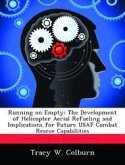On 23 March, 1961, an American SC-47 departed Vientiane, Laos, on a flight that was destined for Saigon, South Vietnam. While enroute, the pilot flew the intelligence gathering aircraft near a Pathet Lao encampment in an attempt to obtain information about the radio frequencies used by the insurgents. Enemy anti-aircraft artillery (AAA) hit the aircraft and brought it down near the encampment. Pathet Lao soldiers captured the sole survivor of the crash and held him prisoner for nearly a year.1 There was no rescue mission was ever launched. A little over six years later, enemy AAA shot down a USAF F-105 near the Mu Gia Pass in North Vietnam.2 However in this situation, a professional force consisting of dozens of Americans and over 15 aircraft successfully rescued the pilot and returned him to his squadron. The reason why each situation had a different outcome was due to one simple fact: the quality of search and rescue (SAR) capability available at the time in Southeast Asia.
Hinweis: Dieser Artikel kann nur an eine deutsche Lieferadresse ausgeliefert werden.
Hinweis: Dieser Artikel kann nur an eine deutsche Lieferadresse ausgeliefert werden.








